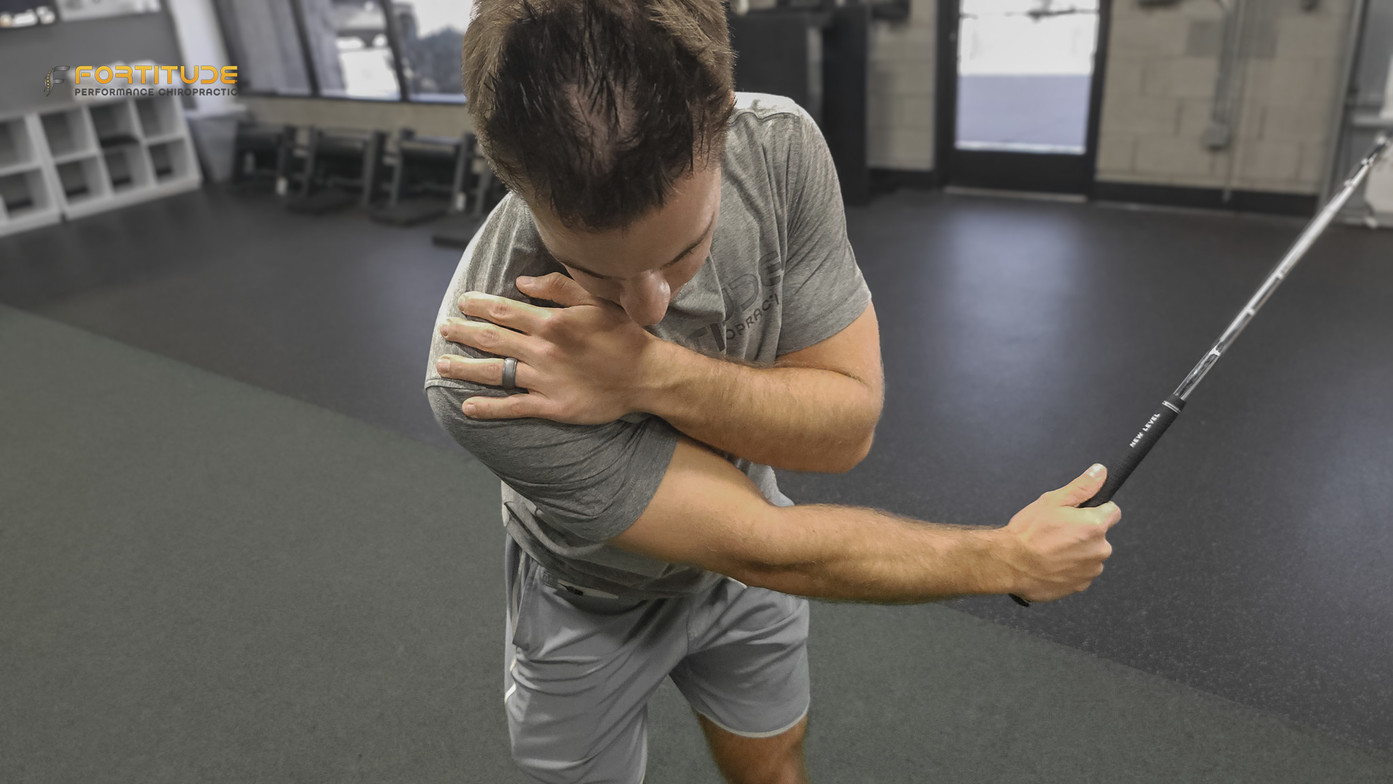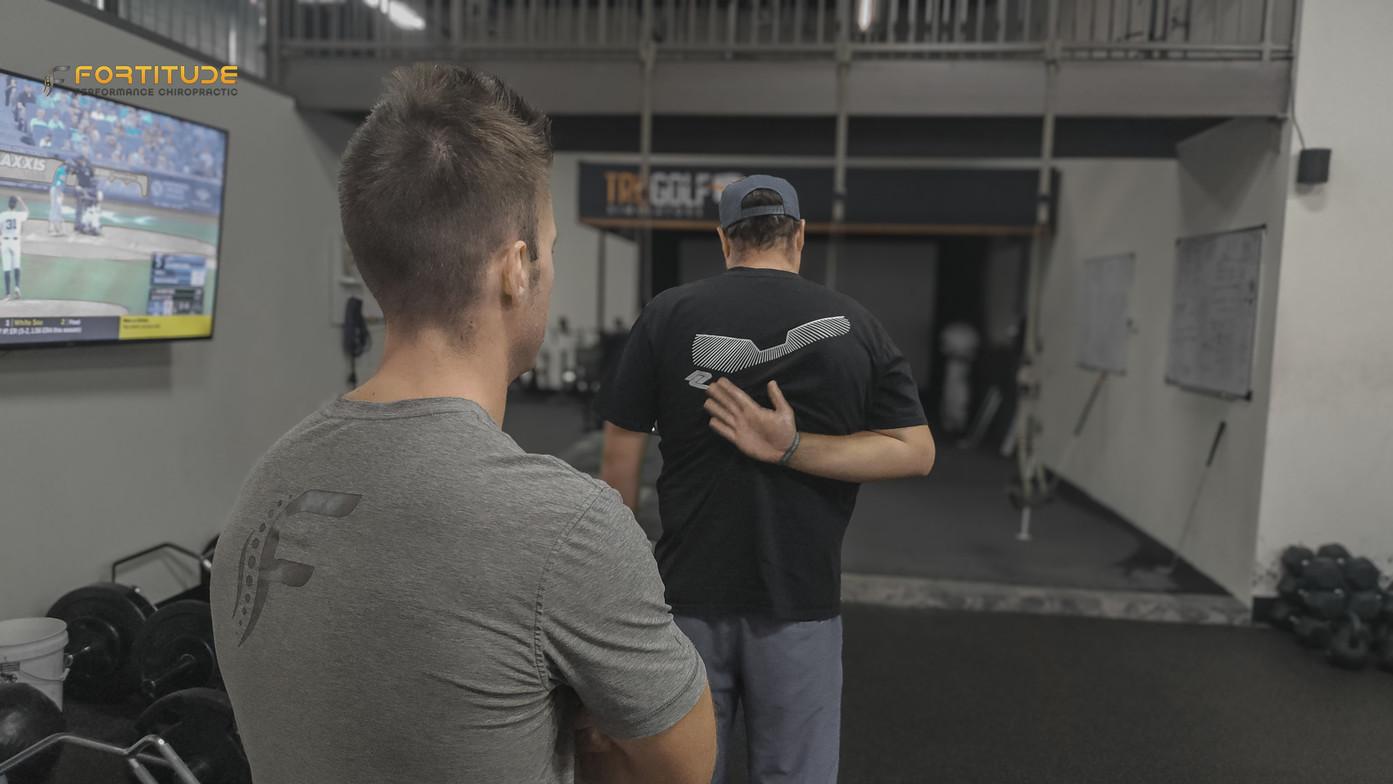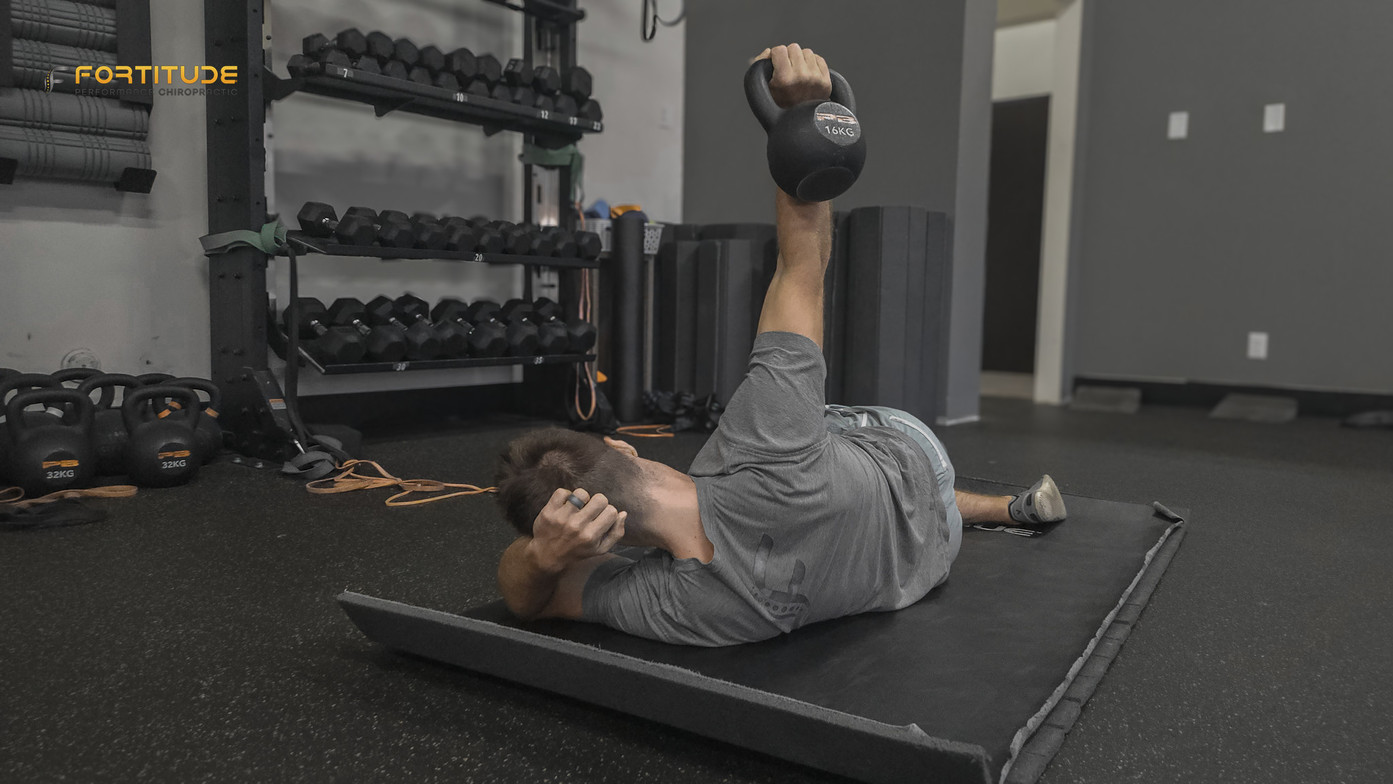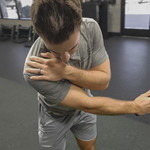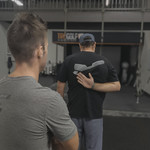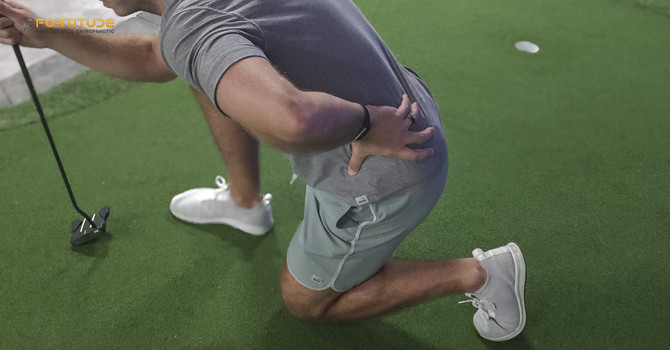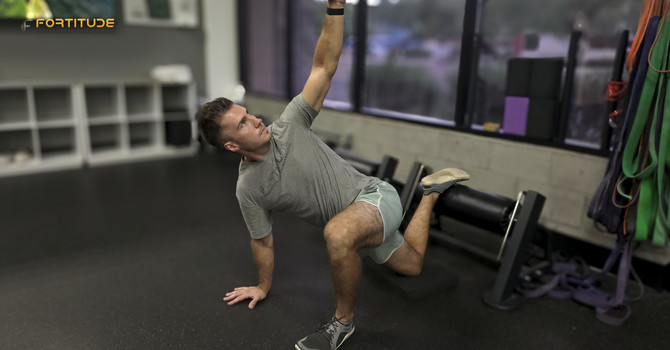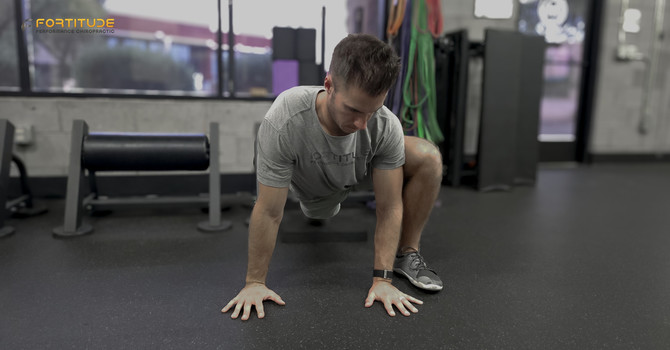Shoulder Pain From Golf: Why It Happens and How to Fix It
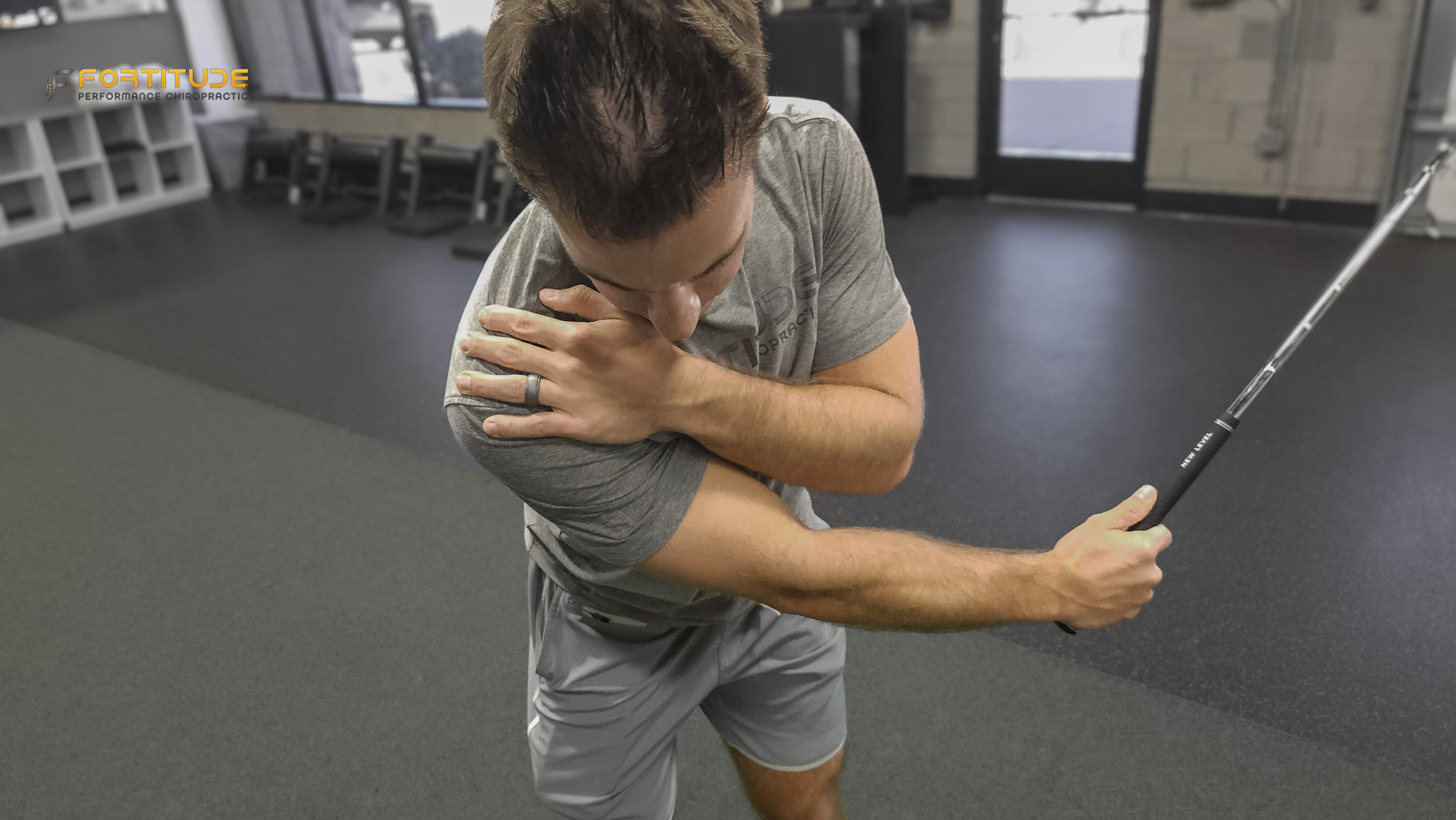
Shoulder Pain Getting in the Way of Your Game?
If your shoulder lights up every time you swing, you’re not alone. Shoulder pain is one of the most common reasons Scottsdale golfers end up missing rounds or cutting practice short, not just because it hurts, but because it makes your swing unpredictable.
For most golfers, it’s not just about discomfort. It’s the frustration of losing consistency, the worry about long-term damage, and the sinking feeling that your game is slipping. You might even wonder, “Is this just what happens as I get older?”
The good news? It doesn’t have to stay this way.
When we work with golfers here at our Scottsdale clinic, the first step is always the same: figure out what’s really causing the pain. Often, it’s not even the shoulder’s fault, it’s a breakdown in how the spine, core, or hips are moving that’s forcing the shoulder to overwork.
Once we pinpoint that, we can help you:
- Feel stronger and more stable through your swing
- Hit consistently without that nagging pain
- And stay on the course, round after round, without worrying about injury
In this post, we’ll cover:
- What causes shoulder pain in golfers
- Why it often flares up during your swing
- Why stretching might be making it worse
- How chiropractors treat shoulder pain (and what to expect)
What Causes Shoulder Pain From Golf?
Shoulder pain from golf isn’t random. It’s usually your body’s way of saying something in your swing or movement pattern is off.
The golf swing is powerful, complex, and full-body. If one area isn’t pulling its weight — like your hips, core, or mid-back — the shoulder ends up doing too much. That extra workload can lead to irritation, inflammation, and eventually a nagging injury.
Most common causes include:
- Overuse with Poor Recovery: When you play or practice a lot without giving your body time to recover, small breakdowns start to add up.
- Swinging with Just Your Arms: If your body isn’t rotating well, your shoulders try to do it all — and they weren’t built for that job alone.
- Limited Mobility Elsewhere: Tight hips or a stiff upper back force compensations that land on the shoulder.
- Muscle Imbalance or Weakness: A weak core, rotator cuff, or shoulder blade muscles create instability, especially at the top of the swing.
- Old Injuries or Poor Posture: Previous trauma or everyday habits like slouching at a desk can quietly alter your swing without you realizing it.
“We recently worked with a golfer in Scottsdale who had sharp shoulder pain every time he hit his driver. He had been foam rolling and stretching his shoulder for months with no relief.
During his movement assessment, we found the real issue wasn’t his shoulder at all. It was a combination of limited mid-back (thoracic) rotation and poor control of his shoulder blade during the backswing. His core wasn’t stabilizing either, so every swing overloaded the shoulder joint.
Once we addressed his thoracic mobility and taught him how to control his scapula better, the pain disappeared and he actually gained 18 yards on his drives without changing his swing.”
Dr. Max
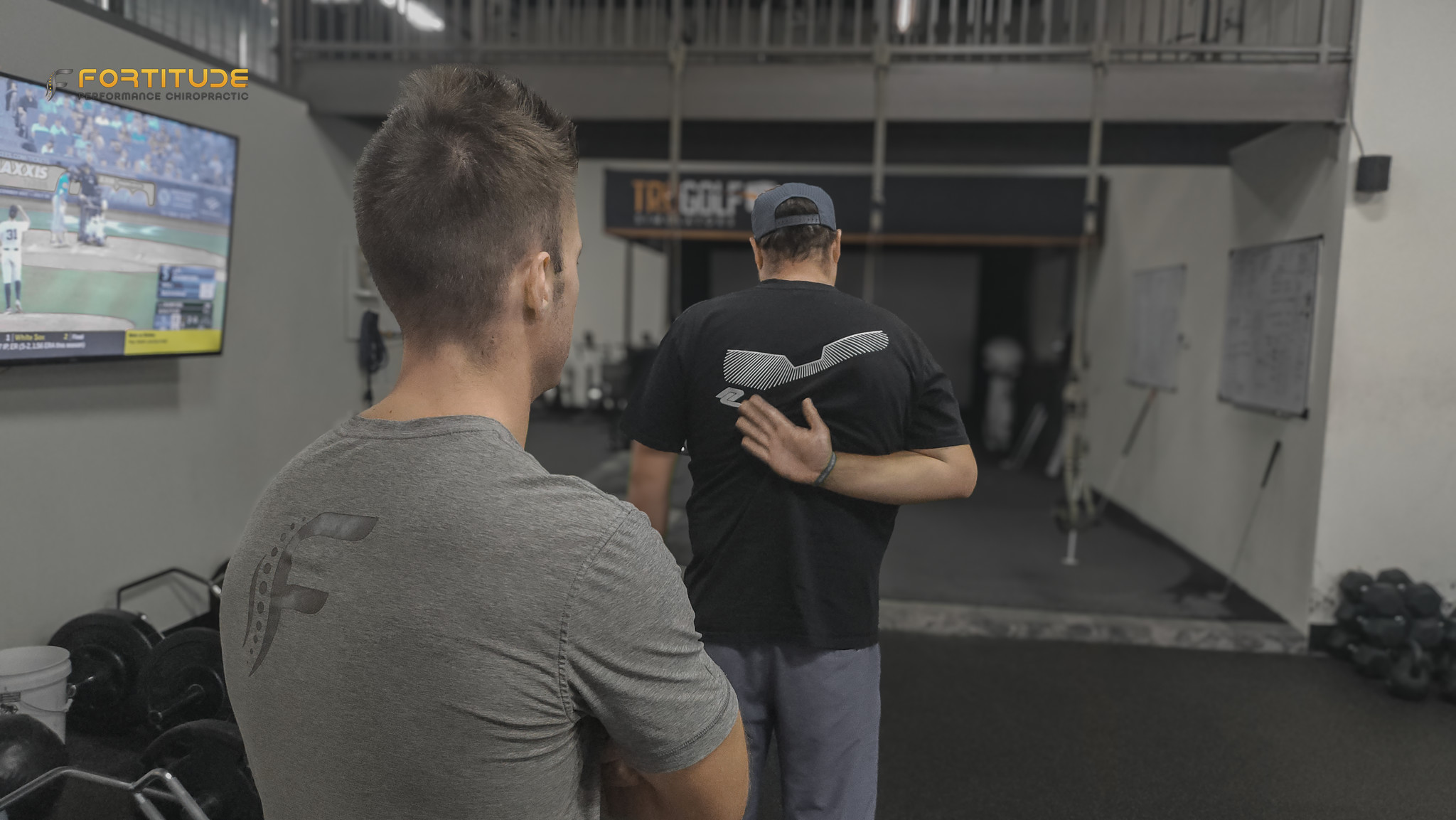
Pain During the Swing: A Sign of Deeper Dysfunction
Shoulder pain during specific points in your swing is a big red flag that something is off in your movement system. Here’s where it usually shows up:
- Top of the Backswing: Lead arm fully elevated → max stress on the shoulder. Pain here could mean impingement or tightness in your chest/back.
- Downswing/Impact: High torque phase. Shoulder pain here may mean instability, AC joint strain, or rotator cuff stress.
- Follow-Through: Your shoulder has to decelerate your arm. Weak cuff or core? It takes on too much of that braking force.
“When we evaluate a golfer’s swing, we break it down phase by phase and pair it with a full-body movement screen. That way, we’re not just guessing — we’re pinpointing where the breakdown is really happening.”
The key takeaway: shoulder pain is usually the symptom, not the source.
Why Stretching Isn’t Solving It
Stretching is often the go-to fix, but it’s usually not enough. In fact, it might be making things worse if your shoulder is unstable or irritated.
Here’s why:
- Instability masquerading as tightness: If your rotator cuff and stabilizers are weak, your shoulder moves too much — and your body tightens up to protect it.
- It doesn’t address the root cause: Limited thoracic mobility, poor core control, or hip stiffness will continue to overload the shoulder until they’re addressed.
- Stretching into pain can aggravate the issue: If you’ve got an impingement or bursitis, aggressive stretching can actually flare it up.
Instead of trying to loosen everything, we need to focus on restoring proper control, mobility, and movement through the entire chain.
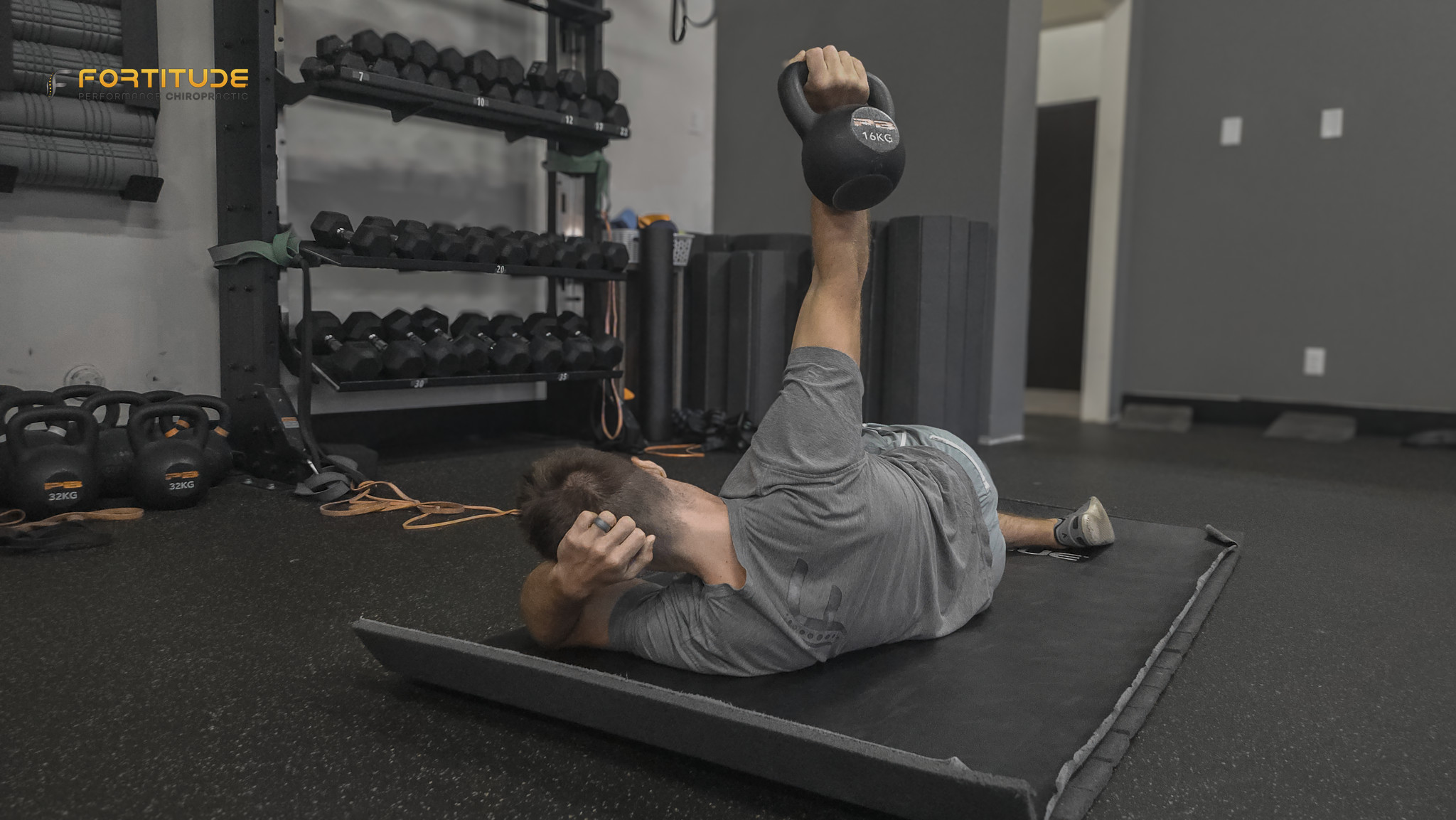
How Chiropractors Treat Shoulder Pain in Golfers
Chiropractic care for shoulder pain at Fortitude Performance Chiropractic is about more than just adjusting the joint. It’s a full-body approach to movement that looks at why your shoulder is hurting and how to prevent it from coming back.
A typical plan might include:
- Full-body movement screen: Testing how your spine, hips, shoulder, and core are working together.
- Manual therapy: Soft tissue work or adjustments to restore joint motion and reduce tension in key areas (like the pecs, thoracic spine, or shoulder capsule).
- Rehab exercises: Focused on rotator cuff strength, scapular stability, and core control.
- Smart loading: Keeping you active while managing symptoms. We often encourage golfers to keep playing – with the right plan in place.
“The truth is, the best treatment is the one that is right for you.While many of our plans include things like shoulder stability drills, upper back mobility, or core control work, the exact approach depends entirely on what we find during your movement assessment.
Sometimes it is a lack of rotation through the spine. Other times it is poor control of the shoulder blade. The key is identifying what your body needs most and then building a plan around that to reduce pain, restore movement, and protect your shoulder for the long haul.”
Dr. Molly
When Should You Get It Checked Out?
If your shoulder keeps bugging you, don’t wait until it takes you off the course completely.
It’s worth getting assessed if you’re noticing:
• Shoulder pain during or after your swing
• A drop in strength or mobility
• Popping, catching, or pinching sensations
• Little to no progress despite rest or stretching
The sooner you understand what's going on, the easier it is to fix. Most of the golfers we work with wish they hadn’t waited so long.
FAQ
Why does my shoulder hurt only when I swing a golf club?
If your shoulder hurts during your swing, it likely means something in your movement is off. Often, poor rotation in your hips or spine forces your shoulder to overwork. That compensation can lead to impingement or stress on the rotator cuff. A sports chiropractor will assess how your entire body moves to find the true source of the issue and help correct it.
Can chiropractic care actually fix shoulder pain from golf?
Yes, and more importantly, it can fix why your shoulder is hurting in the first place. At Fortitude Performance Chiropractic in Scottsdale, we look at how your body moves and how your swing mechanics might be stressing the joint. Our care blends hands-on treatment with rehab tailored to you, so you can move better and prevent the pain from coming back.
What kind of chiropractic treatments help shoulder pain?
Our treatments focus on restoring motion, relieving tight muscles, and building strength where your shoulder needs it most. This often includes joint adjustments to the spine or ribs, soft tissue therapy to relax overworked muscles, and exercises to improve shoulder blade control and rotator cuff strength. Every plan is based on how your body moves and what your swing demands.
Will I need to stop playing golf while rehabbing?
Not necessarily. Most of the golfers we help are able to keep playing with smart adjustments to their routine. We work with you to reduce stress on the shoulder, improve mechanics, and keep you active while building strength and control. We’ll let you know when to rest and when it is safe to push again.
Is it better to see a sports chiropractor for golf injuries?
Yes. A chiropractor who specializes in athletes understands how the game of golf stresses your body. Instead of just treating the pain, we evaluate your full-body movement, including spinal rotation, core engagement, and hip mobility. That gives us a complete picture of what is going wrong and how to fix it.
How long does it take to fix shoulder pain from golf?
Every golfer is different. Some see relief in just a few sessions, while others need a few weeks of consistent care to resolve the problem. The key is having a plan that gets to the root of the issue. When we know why your shoulder is hurting, we can guide you toward lasting relief and better performance on the course.
If shoulder pain is interfering with your golf game, you don’t have to guess your way through it or push through the pain. With the right plan, you can fix the problem, protect your swing, and stay on the course doing what you love.

Fortitude Performance Chiropractic
Contact Me
